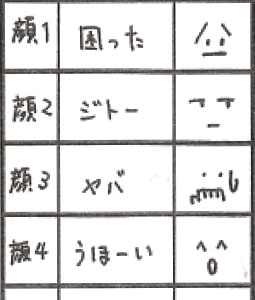Home > Highlighting JAPAN > Highlighting Japan August 2018 > From Japan to the world
Highlighting JAPAN


Eloquent Characters: The Global Love of Emoji
Emoji first appeared roughly twenty years ago on Japanese cellphones, but they’re now an essential form of communication for people around the world.
Emoji were created in 1999 during the development of i-mode, a mobile Internet platform for cellphones created by NTT DOCOMO, INC. The simple 12x12-pixel designs of people’s expressions and objects from daily life were made to facilitate smooth visual communication using character data, regardless of screen and message size. Due to staff and time limitations, it was not a professional designer but the development planner for i-mode at the time—current DWANGO Co., Ltd. director Shigetaka Kurita—who led the design effort.
Asked to look back on the struggles of developing emoji with a team of just three people, Kurita had this to say. “Due to using short lines of text, misunderstandings arise easily in digital communication, so it was necessary to add the nuance of facial expressions. It was inevitable that emoji would be born in this day and age.”
In the United States, computer scientists began to use text-based smileys on BBS message boards in the 1980s, and Japanese emoticons (kaomoji) were used on Japanese PCs. In communication, people tend to prioritize not the simple words used to communicate but the underlying emotional information, so adding a smiley or heart to the end of a sentence to indicate a positive impression can prevent misunderstandings.
These were the forerunners of emoji. Kurita, however, came up with much more than just faces, adding simplified renderings of everyday objects and information—such as food, vehicles and buildings—to create a fun set of emoji.
Right after their creation emoji exploded in popularity, mostly among teenagers, and by 2004 they were well established throughout Japan. In 2009 they were incorporated into Unicode*, making them standard characters that could be used worldwide, and in 2012 they were made available for use on smartphones, accelerating their diffusion across the world. In 2016, the original 176 emoji from NTT DOCOMO’s i-mode platform were added to the collection of the Museum of Modern Art (MoMA) in New York. Nowadays emoji come preloaded on iOS and Android devices, as well as on Mac OS and Windows computers.
When news of the addition of emoji to MoMA was publicized, Kurita’s social media accounts were flooded with messages of gratitude and congratulations from international users saying that his emoji changed their lives, and thanking him.
“I never imagined that emoji would become this widespread worldwide,” Kurita says. “The Japanese language has multiple types of writing systems such as kanji and kana, so it’s not strange for emoji to be mixed into our written text as well, but for people whose written culture is more focused around phonetic language, this was probably a novel concept for them, and they found it new and interesting.
“I’ve been told that in the beginning, people outside Japan would send messages containing just emoji as a kind of puzzle or code,” he continues. “But I think in the end, people in and outside Japan love and use emoji in the same way, and they have become a universal thing.”
Around three thousand emoji have been incorporated into Unicode to date, some twenty years since the birth of emoji. “Emoji will likely remain as long as we have communication that’s limited by a screen and character limits, but if a form of communication such as voice input becomes the norm, emoji might change as well,” Kurita predicts.
*Unicode: A worldwide standard of character code for displaying the characters of most of the world’s writing systems. It originated in North America and Europe.
© 2009 Cabinet Office, Government of Japan










